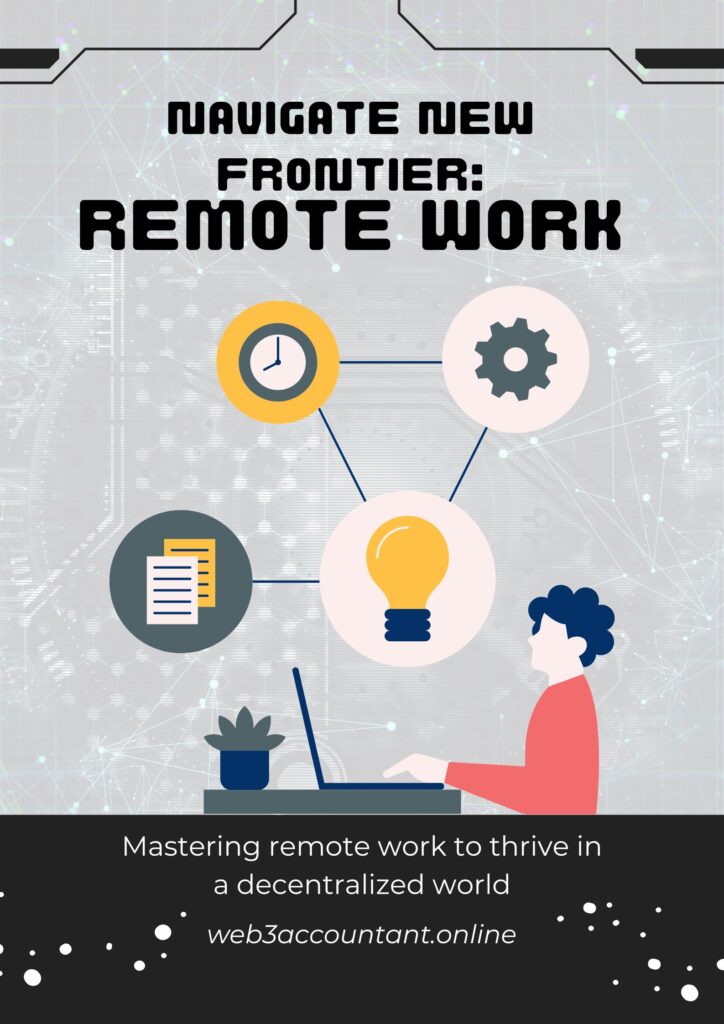
Global Remote Workforce Trends vs Singapore’s Current Work Type
Remote work has become a defining feature of the modern workplace, significantly reshaping how businesses operate worldwide. Accelerated by the COVID-19 pandemic, this shift is now cemented as a permanent, strategic choice for many organizations, including those in the Web3 environment, which thrives on decentralization and digital collaboration.
Globally, remote work has become the norm rather than the exception. According to the World Economic Forum (WEF), 84% of companies have expanded or plan to expand remote work opportunities post-pandemic. In Singapore, the Ministry of Manpower (MOM) reports that 8 in 10 employers have adopted remote work practices in some capacity since 2020. Looking ahead, MOM projects that by 2025, up to 40% of the workforce in Singapore may be working remotely at least part-time.
These changes are transforming workforce dynamics by creating a broader and more diverse talent pool, changing expectations around work-life balance, and fostering a “digital nomad” culture where employees work from anywhere. For Web3 companies, which are inherently decentralized, this shift towards remote work aligns perfectly with their values. Decentralized organizations view remote work as an opportunity to tap into a global talent pool, reduce overhead costs, and promote an agile and responsive workforce that isn’t bound by physical locations.
Common Challenges in Remote Work
In a remote setting, communication often becomes less fluid than in a traditional office environment. The absence of face-to-face interactions can lead to misunderstandings or delays in information flow. Remote teams may miss out on non-verbal cues, informal discussions, and spontaneous brainstorming sessions, which are critical for fostering innovation and problem-solving. Moreover, time zone differences can delay responses and make it challenging to coordinate real-time discussions. These communication barriers can result in a lack of clarity about tasks, misinterpretation of objectives, and misalignment between team members, ultimately affecting productivity and project outcomes. For example, a team member may misinterpret a written directive due to cultural nuances or lack of context, leading to errors and frustration.
Remote employees often miss out on the camaraderie, social interactions, and on-site perks that come with an office environment. Over time, this isolation can lead to decreased engagement and motivation. The lack of physical presence can make employees feel disconnected from the company’s vision and culture, leading to a decline in job satisfaction and loyalty. Additionally, remote work can blur the boundaries between personal and professional life, causing stress and burnout. Low engagement can result in reduced productivity, higher turnover rates, and difficulty in maintaining a cohesive team culture. Disengaged employees are less likely to participate actively in meetings, contribute ideas, or go the extra mile in their roles, which can affect overall team performance.
In a remote work environment, traditional performance management practices that rely on physical presence, observation, and direct oversight are less effective. Managers may struggle to accurately assess an employee’s performance, as they lack visibility into day-to-day activities. Additionally, remote work requires a higher degree of self-discipline and accountability from employees, which may be challenging for some, especially if they are not used to working independently. Poorly managed performance can lead to a lack of accountability, inconsistent work quality, and a decrease in overall productivity. Without a robust performance management framework, employees may feel uncertain about expectations, resulting in anxiety and decreased job satisfaction.
Managing a Remote-First Workforce
Despite these challenges, companies can leverage the right strategies to manage a remote-first workforce effectively:
Build Trust and Autonomy: Companies like GitLab have succeeded by fostering a culture of trust and autonomy, empowering employees to manage their schedules and make independent decisions. This approach encourages productivity while maintaining engagement.
Promote Virtual Engagement: Creative virtual team-building activities, such as those implemented by Buffer, help keep remote teams connected and motivated. Regular virtual events and social interactions can bridge the gap created by physical distance.
Adopt a Robust Performance Management Framework: Tools like OKRs (Objectives and Key Results) used by companies like Automattic focus on measurable goals and continuous feedback, ensuring accountability and alignment without micromanagement.
How Tools and Technologies Come in to Manage a Remote Workforce
Leveraging the right tools and technologies is critical for managing a remote workforce effectively. Here are three widely used tools by large MNCs:
Microsoft Teams: A unified communication and collaboration platform that provides real-time messaging, video conferencing, and integration with Office 365 applications. For instance, Accenture uses Microsoft Teams to facilitate daily communication, run virtual meetings, and manage files across its global workforce, ensuring organized communication and collaboration.
Workday: A comprehensive Human Capital Management (HCM) solution that automates HR processes like onboarding, payroll, and compliance, while offering performance management tools. Amazon uses Workday to streamline HR functions and provide real-time analytics for workforce planning and engagement.
Slack: A leading messaging and collaboration tool that organizes communication by channels and integrates with over 2,000 third-party apps. IBM uses Slack to maintain clear communication channels and integrate with other tools like GitHub for efficient project management across its global workforce.
By understanding and addressing the common challenges of remote work, companies can build a resilient and effective remote workforce. Leveraging tools like Microsoft Teams, Workday, and Slack helps overcome communication barriers, maintain engagement, manage performance, ensure data security, and promote inclusivity. Combining these tools with thoughtful management practices enables organizations to thrive in a decentralized, global Web3 environment, ultimately achieving their strategic goals and driving long-term success.

